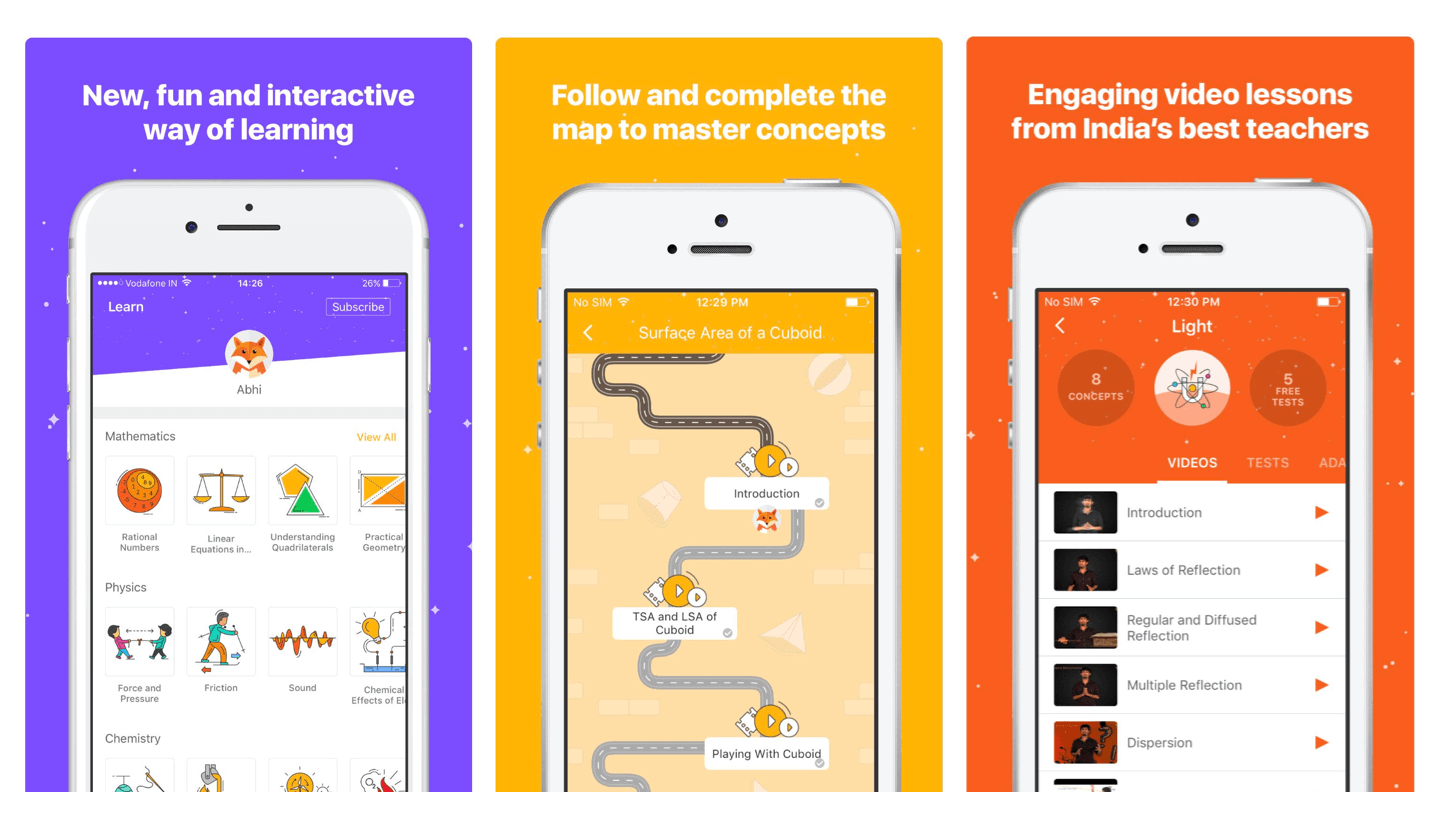Recently I attended the UX Insights Festival and Sarah Mpapuulu hosted a talk about the role of user participation in UX Research. Something I have also written about before when it comes to UX Design. But what caught my attention was her introduction of gamification elements in her UX research methods. My background in UX design and research for games sparked something in me, and I wanted to dive deeper into how gamification can be used in UX Research.
Gamification as a UX research method
When we talk about gamification we mean the addition of game mechanics into non-game environments. The goal of gamification is to engage with, for example, our users and inspire them to collaborate, share or interact with us or the product (Hamari, Koivisto, & Sarsa., 2014). Often we think about applying gamification elements to websites, online communication or learning platforms. But how about adding gamification elements to your UX research?
By integrating game elements into your research methodologies we can increase the engagement of participants in UX research and gather valuable insights from users. The idea behind gamification is to use elements from games, such as competition, rewards, and challenges to motivate and incentives users and their participation during research activities.
Gamification is nothing new but using it in UX research to enhance our methods seems to be a recent development and one that I am super excited about. Research shows us that there are benefits to applying gamification to your UX research methods (Deterding et. all., 2011), such as:
⭐️ Gamification allows for Increased user engagement
One of the benefits of gamification is that it adds a level of fun to the activity that you have set up for your participants. And fun increases enjoyment and interactivity. Applying gamification elements can also lead to higher participation rates and, more importantly, more accurate collection of data.
⭐️ Gamification enhances your participant’s motivation
When you use gamification elements in your UX research method it can motivate participants to more actively engage with the research activity. Elements you can use can be, rewards, badges, levels, achievements, etc. These types of elements increase the intrinsic motivation f participants by focusing on achievement, competition, and progress, making the research activity more compelling to partake in.
⭐️ Gamification can help gather deeper insights
Another benefit of applying gamification to your UX research is the ability to gather rich and qualitative data from your users. By using interactive game mechanics, participants can become more willing to provide detailed feedback and share their experiences during the research activity. This leads to a deeper understanding of your users’ preferences, behaviors, and pain points. And understanding those gives us deeper insights into our user’s motivations and mental models.
⭐️ Gamification allows for real-time feedback
Instant feedback from participants becomes available when conducting gamified UX research. It allows the users to see the impact of their actions and make adjustments accordingly. It allows the user to see how their actions impact the activity (such as a product test or evaluation) and shows the UX researcher how the users make adjustments in their behavior towards your activity. This immediate feedback can facilitate quicker iterations for your designers and the decision-making process for product development.
⭐️ Gamification allows for long-term engagement
Our users are busy, they don’t have time to partake in research activities. Research can be boring too. By applying gamification to our UX research methods we can facilitate long-term engagement with the participants. And by doing so create ongoing relationships that can be useful for later research projects as participants had a fun and pleasant experience that intrinsically motivated them to participate.
The elements of gamification
Ss stated at the beginning of the article, gamification revolves around incorporating game elements and/or mechanics into non-game contexts and environments to increase user motivation and engagement. There are several elements from games that can be used here. Such as points, badges, levels, leaderboards, and challenges (Werbach & Hunter., 2012; Deterding et. all., 2011). Let’s take a closer look at some gamification elements;
🪪 Badges
Badges can be used to signify mastery or completion of specific tasks and are often a nice visual representation of achievements. Badges are an interesting element to use for longer-term projects when you want to focus on building relationships with users and creating a database of valuable participants for future projects.
🪜 Levels
Levels, just like points, can give the participant a sense of progression. They allow users to unlock new content or features as they advance. This is helpful in segmenting your user database in skill levels but also increases the motivation of users to dive deeper into a product to achieve that progression.
💯 Points
Points are an easy way to track the progress of your user. They also provide the participants with a sense of accomplishment. When using points as a gamification element, try to work in tens and hundreds as the progression then feels quicker to users instead of using single points.
🥇 Leaderboard
Leaderboards are a well-known method to introduce competition and social comparison in games. Using leaderboards enables users to compare their performance with others. However, this can be a tricky element to use as people tend to experience negative feelings when they are low on the leaderboard.
🧐 Challenges & Quests
Challenges are interesting as they provide users with specific objectives or goals to accomplish. Doing so adds excitement and a sense of purpose to the experience of partaking in UX research. What is important to keep in mind here is that the challenges set are achievable by users. You can read more about this in my article on scaffolding.
🦊 Avatars
Users love to create their own avatars or digital personas as it enhances the personalisation and immersion in research experiences. Avatars can be used by users during research activities to present themselves or to create their own ‘research profile’ for future projects.
🛣️ Progression pathways
Knowing where you are during the research activity can provide users with a sense of direction and purpose. This can be done in the form of user journeys or a stepper. Doing so visually and making it easy for users to follow that progress motivates the user to continue and complete the research tasks.
🔓 Unlockable content/features
During your research activity, you can use the element of unlockable content or features that the user can only access by progressing through the activity. Doing so creates anticipation for the participant and adds a sense of reward. You can do this during UX research by gradually revealing new information, and providing the participant with exclusive resources or additional functionalities as they progress.
💬 Social collaboration & Competition
Humans are social creatures and using the element of social collab or competition can increase the user’s engagement and interaction between participants. For this game element, you can think about collaborative challenges, team-based activities, or the use of leaderboards to encourage healthy competition.
📖 Story telling & Narratives
The use of stories or narratives increases the immersion and engagement of the research activity for your participants. You can do this by framing the research within a compelling narrative as it helps participants to feel a stronger connection to the task and objectives, which ultimately leads to deeper engagement and insights.
🗳️ Voting & Polling
The use of polls or voting systems allow your participants to think about their opinion and cast them without much discussion. The results of such a poll can however greatly assist you in the discussion that follows. You can use this element for example to vote for designs and ideas, but you can also use them to vote for challenges that users encounter.
Using gamification elements in UX Research
Applying gamification to your UX research method can be a powerful way to collect data, test usability and assess user engagement. These game elements can be applied to several UX research methods but that doesn’t mean you always should. It is of the utmost importance to choose your gamification elements based on your research goals and content to enhance the research experience. Let’s take a look at a few UX research methods and which gamification elements could be interesting to apply here (Morschheuser, et. all., 2017.; Hamari, Koivisto & Sarsa., 2014).
Surveys/Questionnaires
Points, badges, progression pathways & levels
Surveys and questionnaires are UX research methods that are quick to design and used often. Adding gamification elements, such as progress bars, rewards, and challenges can increase the user’s engagement and provide accurate and detailed responses.
Usability testing
Points, badges, progression pathways, levels & storytelling
During usability testing, it is useful to create realistic scenarios and tasks that evoke authentic user experiences. Doing so allows the UX researcher to observe user behavior and gather insights in a more immersive and active manner. For example, by adding a story to your usability task you increase the immersion and engagement for the participant. Add points or badges to the tasks to give the participant a sense of achievement. And by using progression pathways and levels you can make it clear to the user where they are in the task and what they have achieved so far.
Focus Group
Points, leaderboards, challenges, voting/polling, social collaboration & competition
Focus groups lend themselves really well to the addition of gamification. Points can be used as rewards for active participation, providing valuable insights, or asking thought-provoking questions. Combining this with a leaderboard to show the highest contribution can motivate other participants to speak up more. Using challenges can prompt participants to explore certain scenarios and come up with creative ideas or solutions. You can do so by setting group goals or tasks that require the participants to collaborate, problem-solve and/or brainstorm to complete. Points can also be used here as a reward. An interesting method to use during this would be the co-creation method. You can also use elements such as voting and polling to increase engagement and see how participants feel about certain ideas. The results here could then again be used to divide points amongst participants to increase engagement in certain tasks.
Persona research
Avatars
During persona research, you can use the element of avatars. Avatars can help users to connect with their persona role and provide more insightful responses. It is often difficult for people to talk about their challenges, fears and frustrations, but when they create an avatar that is experiencing challenges or has specific needs it can help users to open up more and provide you with more useful insights.
User Engagement
Leaderboards, challenges, social collaboration & competition
Assessing the user’s engagement with your product or task can also be done with the use of gamification elements. You can track metrics such as time spent, completion rates, and user actions by using game elements such as leaderboards and challenges. And if your product focuses more on collaboration between users you can use the elements of social collaboration and competition to assess their engagement with the product and their interactions with one another. Applying these elements will encourage users to explore different features and different user strategies which in turn will provide you with valuable feedback.
User Testing & Feedback
Challenges, quests, storytelling & narratives.
When performing user tests or when you are collecting feedback from users, it can be useful to use the challenges game element. You can disguise testing scenarios as challenges or quests in which participants are presented with specific tasks or objectives to achieve. Combining this with strong storytelling can enhance the immersion for the user and increase their engagement with the task. Together this can give you great insights into not only how users perform tasks, but also how they perceive them, what motivates them, and what captures their attention.
User interviews
Progression pathways, rewards, storytelling & narrative
You may think it’s impossible to add gamification elements to user interviews but you are wrong. Although it’s definitely more complicated than gamifying focus groups, it is also possible for user interviews. Progression pathways can help give users a visual overview of where in the interview progress you are, which provided the participants with a sense of completion. You can do this by breaking up the interview into sections and ticking them off when they are done. Storytelling is another strong method that can be useful during user interviews. You can do this in multiple ways; you can tell a story and ask the users to react to it, you can start a story and ask users to finish the story, you can role-play a story together with a user or you can do partial stories where users fill in specific parts of the story. All of these are interesting ways to gain more insights into the thought process of your users.

Image: gamified apps from CleverTap
How to design gamified tasks
There are of course hundreds more UX research methods out there that could benefit from the application of gamification elements, but for the sake of readability and focusing on the topic I decided to only name a few UX research methods and the gamification elements that could fit them. It is, as mentioned before, very important to look at your research goal and objectives to decide whether or not to use gamification elements in your method and if they benefit the goal. If you think gamification could be an interesting method to apply to your UX research (Domínguez, et. all.,2013.; Zichermann & Cunningham, 2011), keep the following in mind when designing the task(s):
1. Define your research objectives & goals
Make sure that the (gamified) tasks you design for your research align with the research objectives and goals. The tasks you give your participants should be relevant and a representation of real-world scenarios. make sure the tasks focus on gathering the insights you need to achieve your research objectives & goals.
2. Clear instructions & guidelines
Make sure the participant has clear instructions with objectives, rules, and any relevant game mechanics. If you are using points as a game element, for example, then you need to ensure that the participant understands how to achieve these points. In doing so the participant will understand the task requirement and can engage more effectively with it.
3. Make it achievable
As explained in my earlier article on scaffolding, you need to make sure that the challenge is achievable by the user. Make it challenging, but don’t overcomplicate. Understand your user’s skill level and make the challenge interesting enough to maintain engagement but not too difficult that it causes frustration.
4. Test & refine
Before going out there with your gamified research method, test it internally to help you find the right balance. Performing UX research is one thing, but performing gamified research is on a whole ‘nother level. Make sure to test your method a few times to iterate on the design and create a balanced and fun task for the participants.
5. Dont forget the ethical implications
Always make sure that whatever task you design for your UX research method it is respecting participants’ time and privacy. Always obtain informed consent, provide data protection measures where needed, and make sure the experience of partaking in research is enjoyable throughout the entire process.
Motivating users to actively participate during UX research
When designing gamified tasks for UX research, motivating your users to engage and actively participate is very important. Having motivated and invested participants will ensure the quality and quantity of the data you will collect. Users can be motivated using the following strategies:
1. Communicate the purpose and value.
Explain to your users how their contributions during the research activity impact the design or product they use (Kapp, 2012).
2. Use intrinsic and extrinsic motivators
Intrinsic motivators focus on the internal desire for mastery, autonomy, and purpose while extrinsic motivators focus on reward and recognition (Deci & Ryan, 2000). Both of these types of motivators are effective in fostering engagement. Design your tasks in a way that allows the user to showcase their skills and creativity while giving them a sense of accomplishment (Werbach & Hunter. 2012).
3. Be supportive and make it fun
Make sure the tasks you design are intuitive, user-friendly, and visually appealing. This will help to create a more enjoyable user experience. Encourage social interaction and collaboration among your participants by incorporating the social elements of gamification, such as leaderboards, role-playing, and team-based challenges.
Pitfalls of Gamification in UX Research
Just because you can, doesn’t mean you should. Gamification is not a cure-all for boring research activities and does have it’s pitfalls. By being aware of these pitfalls, you can proactively address them and focus on designing tasks that enhance engagement, motivation and provide you with high-quality data.
Superficial engagement
Although gamification is fun, it should not be used as a gimmick. If the gamification elements do not align with the research goals or lack purpose, the engagement of participants may be superficial, which compromises the authenticity of their responses and the quality of the collected data.
Overwhelming Complexity
Designing with game mechanics and elements can make things more complicated. The more mechanics are used the more complex the system becomes. This leads to confusion and cognitive overload. To avoid this, only use the necessary elements to create a nice balance between simplicity and engagement.
Biased responses
Carefully consider and mitigate any potential biases introduced by the game elements in your UX research method as gamification has the potential to influence how users behave and respond. When using social collaboration or competition you could be at risk of seeing socially desirable behaviour instead or real behaviour or responses that participants think are expected in the context of the gamified task instead of real ones.
Lack of accessibility
Cultural differences are always an important factor when performing UX research. But not just cultures, but also the abilities, skills, and preferences of users should be taken into account when designing your research tasks. Keep these differences and needs in mind to ensure equal opportunities for participation.
Ethical considerations
Protecting participants privacy and data as well as adhering to ethical guidelines are very important when defining tasks for UX Research. This is the same for when you apply gamification to your tasks. Always obtain informed consent, clearly communicate the purpose of the gamification elements, and ensure that participant data is handled securely and in accordance with relevant regulations.
Distorted user behavior
Sometimes when we play games, we display different behaviour from how we would use a regular project. Applying the elements of rewards, points, and leaderboards could show a user’s ambitions to win more so than performing the research task. Make sure to strike a balance between motivating your participants and maintaining the quality of your participant’s responses.
Conclusion
Applying gamification elements to your UX research can increase user engagement and motivation while allowing you to uncover deeper insights and real-time feedback. Incorporating game elements, such as badges, challenges and social collaboration you can make research activities more enjoyable for your participants, and encourage participation while collecting qualitative data.
As seen in the article, gamification elements can be applied to a variety of UX research methods, such as focus groups, interviews, and persona research. It is important to always keep in mind your research goals and objectives when applying gamification elements to your research tasks. Make sure to test the method beforehand, and don’t forget to provide your participants with clear instructions and support during the sessions.
Also during your session, make sure your participants are motivated to engage authentically by communicating their values and allowing for both intrinsic and extrinsic motivators. Overall, applying gamification elements can really enhance the research experience, enhance the insights collected, and foster long-term relationships with participants.
Sources
- Deci, E. L., & Ryan, R. M. (2000). The “What” and “Why” of Goal Pursuits: Human Needs and the Self-Determination of Behavior. Psychological Inquiry, 11(4), 227-268. [Link: https://doi.org/10.1207/S15327965PLI1104_01]
- Deterding, S., Sicart, M., Nacke, L., O’Hara, K., & Dixon, D. (2011). Gamification: Using Game Design Elements in Non-Gaming Contexts. In CHI’11 Extended Abstracts on Human Factors in Computing Systems (pp. 2425-2428). ACM. [Link: https://dl.acm.org/doi/10.1145/1979742.1979575]
- Domínguez, A., Saenz-de-Navarrete, J., de-Marcos, L., Fernández-Sanz, L., Pagés, C., & Martínez-Herráiz, J. (2013). Gamifying learning experiences: Practical implications and outcomes. Computers & Education, 63, 380-392. [Link: https://www.sciencedirect.com/science/article/pii/S036013151200268X]
- Hamari, J., Koivisto, J., & Sarsa, H. (2014). Does gamification work? — A literature review of empirical studies on gamification. In 2014 47th Hawaii International Conference on System Sciences (pp. 3025-3034). IEEE. [Link: https://www.researchgate.net/publication/270563419_Does_Gamification_Work_-_A_Literature_Review_of_Empirical_Studies_on_Gamification]
- Kapp, K. M. (2012). The Gamification of Learning and Instruction: Game-Based Methods and Strategies for Training and Education. Pfeiffer.
- Morschheuser, B., Hamari, J., Koivisto, J., & Maedche, A. (2017). Gamified crowdsourcing: Conceptualization, literature review, and future agenda. International Journal of Human-Computer Studies, 106, 26-43. [Link: https://www.sciencedirect.com/science/article/pii/S1071581916301326]
- Werbach, K., & Hunter, D. (2012). For the win: How game thinking can revolutionize your business. Wharton Digital Press.
- Zichermann, G., & Cunningham, C. (2011). Gamification by design: Implementing game mechanics in web and mobile apps. O’Reilly Media.




